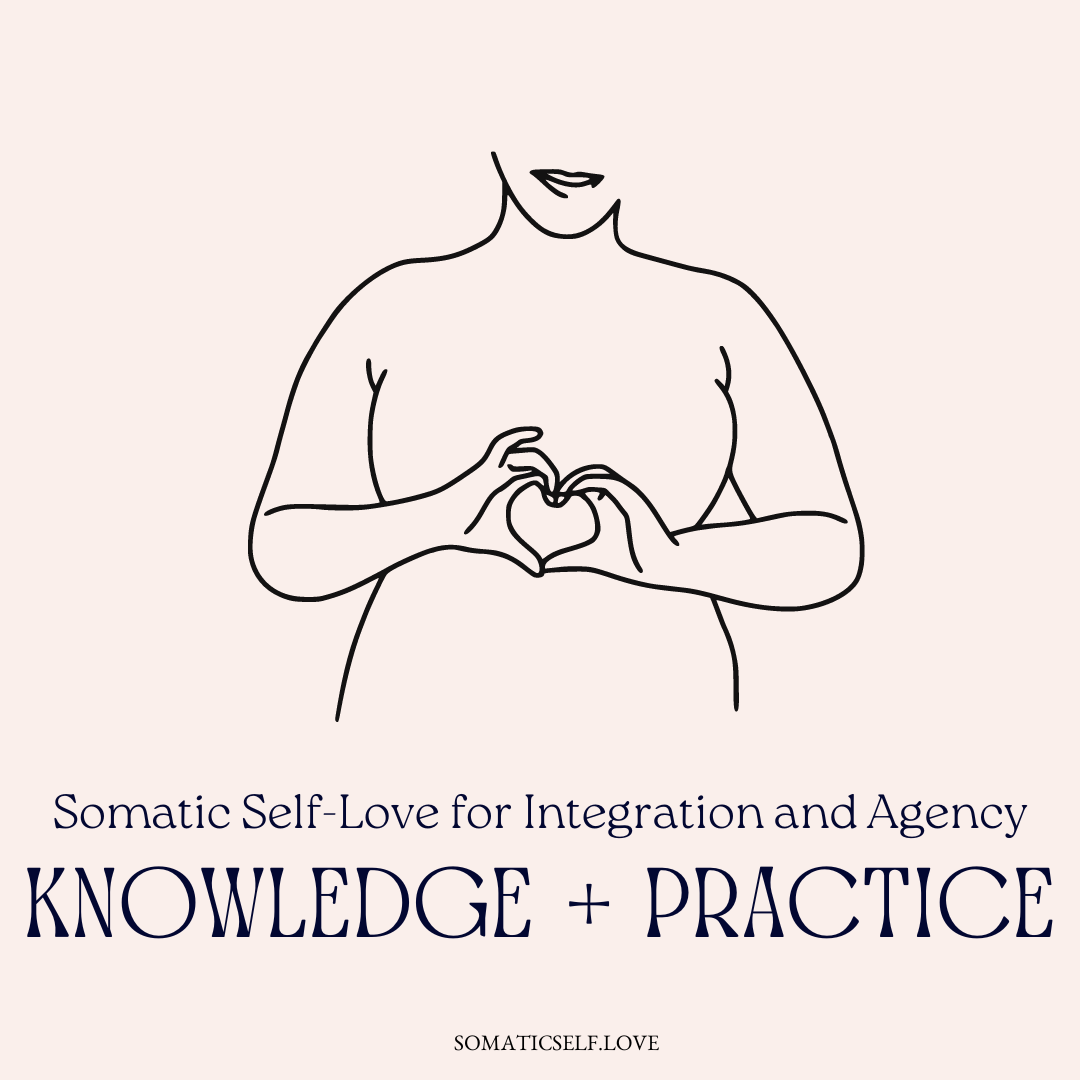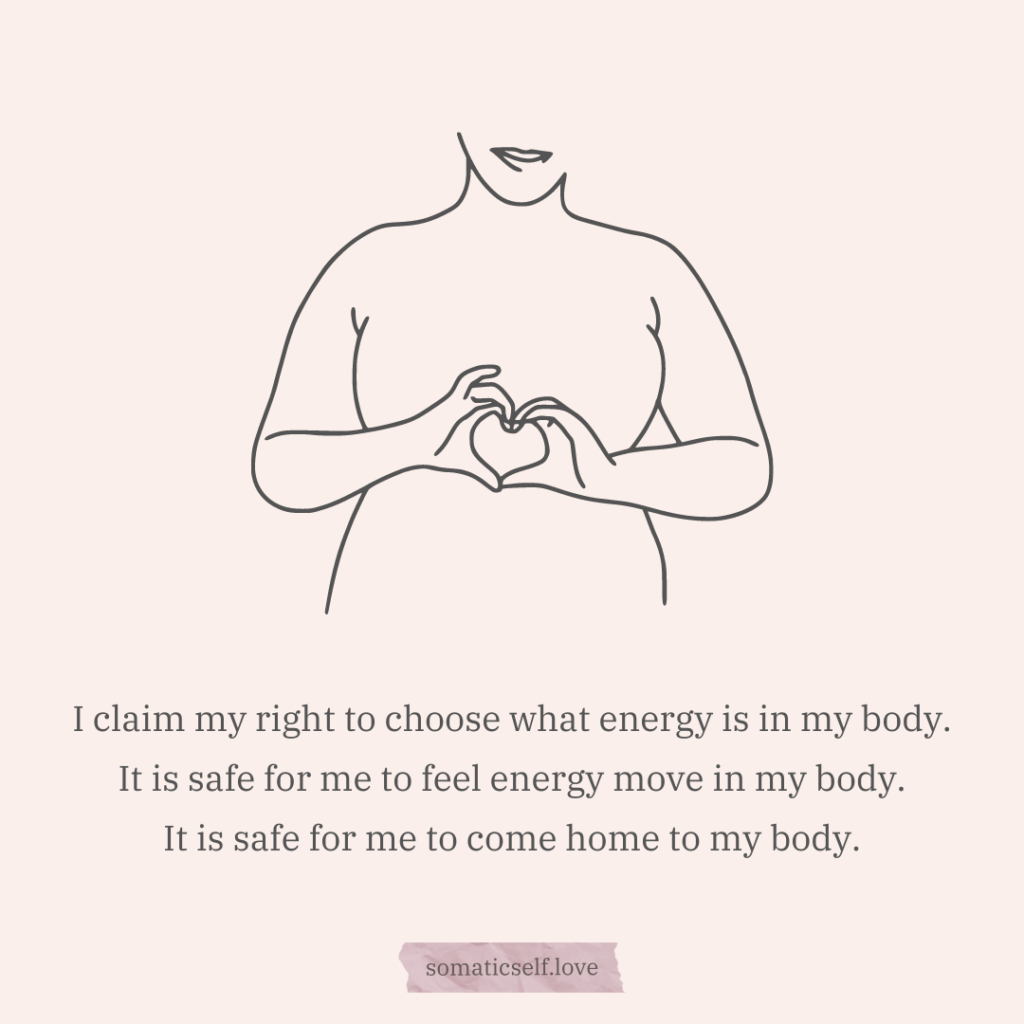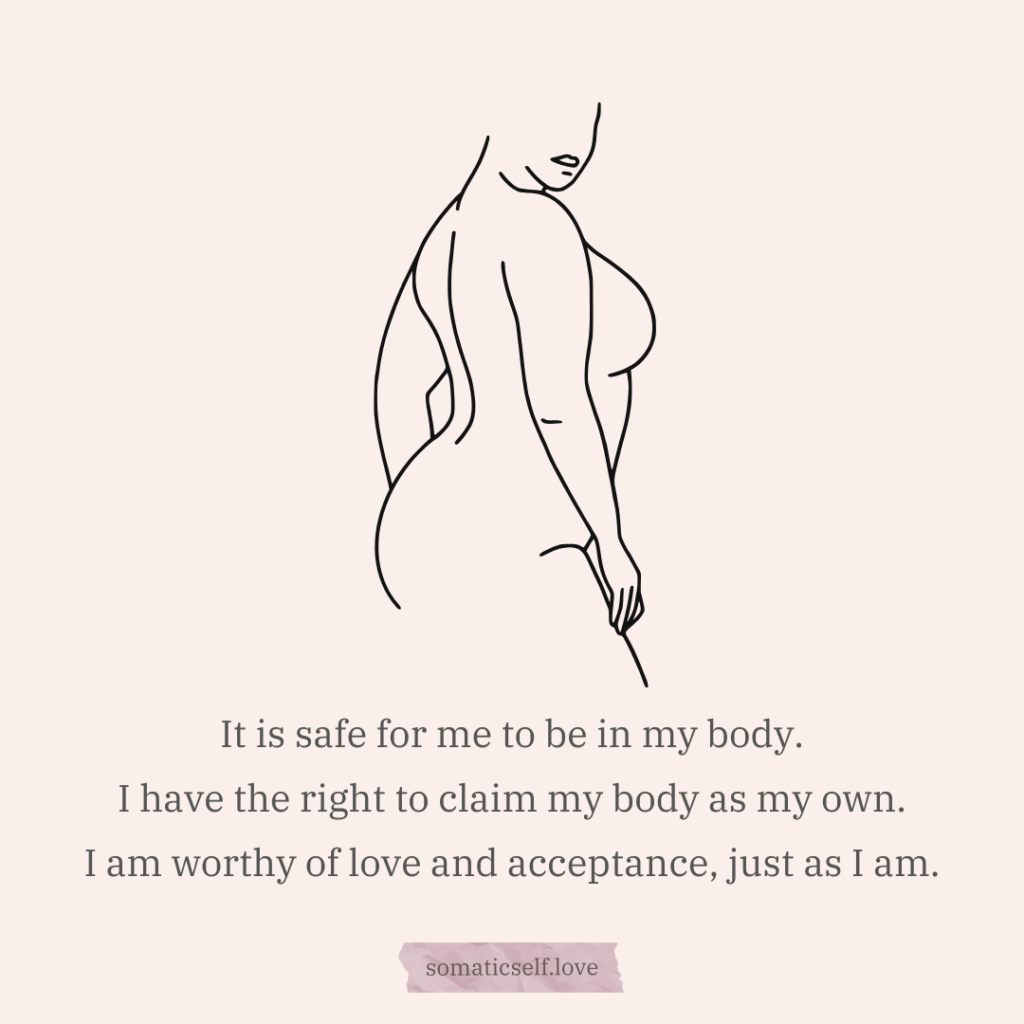Somatic Self-Love for Integration and Agency: Embodied Expression

Childhood abuse impacts our nervous system and sense of self. When we experience abuse as children, our early development can be affected in ways that shape our neural pathways and relationships with our bodies.
Trapped Energy Limits Discernment
This early abuse and the resulting trapped energy in our bodies (trauma) creates a state of dysregulation in our nervous system, which impacts our ability to discern what emotions or energy are ours and what is the result of the abuse we experienced. This makes it difficult to establish a sense of self, understand boundaries, and limits our ability to feel agency in our bodies and in the world.

Our psychological and physical selves hold onto memories and experiences that we may not be aware of. Our ability to process information is limited, and we can only access so much information about ourselves and our past before becoming overwhelmed and triggered.
As a result, our nervous system stores this knowledge, memory, and feeling in different parts of our body, often resulting in physical pain or a fragmented memory of past experiences.
We may find ourselves feeling torn between different aspects of ourselves that want different things.
Nurturing Ourselces
Recovery from trauma involves nurturing a relationship with ourselves, both inside and out. This means making peace between our past and present selves, helping our inner child feel safe, and creating self-agency.
Trauma can create a sense of internal conflict, but recovery is about finding a way to accept, love and belong all the parts of ourselves. By listening to our parts and our bodies, we can begin to integrate fragmented aspects of ourselves.
Somatic self-love practices are a powerful tool for healing and rewiring our nervous system. By engaging in body-based practices that connect us with our bodies, senses, and intuition, we learn to regulate our nervous system and develop self-agency and boundary-setting.
Somatic self-love practices can include various activities, such as movement, present-moment awareness, breathwork, and creative expression. We develop a greater understanding of our bodies so that we can release trapped energy and trauma and cultivate a sense of self-compassion and self-love.
Somatic self-love practices are an essential part of the recovery process for those of us who have experienced childhood abuse. By rewiring our nervous system and developing a greater sense of agency and self-awareness, we can learn to live more fully in our bodies and in the world and experience greater well-being and resilience.
Somatic Self-Love Practice for Integration and Agency: Embodied Expression

Embodied expression refers to the use of the body as a tool for creative and expressive communication. It involves using the body to convey emotions, ideas, and experiences and can include a variety of practices such as dance, movement, theater, and other forms of physical expression.
Embodied expression is based on the idea that the body is a powerful tool for self-expression and communication, and that by engaging with the body in intentional and creative ways, individuals can tap into deeper levels of emotion, creativity, and self-awareness.
Some common examples of embodied expression include:
- Dance: Dance involves using the body to express emotions or tell a story, often through movement and music.
- Theater: Theater involves using the body to portray characters or convey emotions or ideas, often through scripted dialogue or improvisation.
- Movement therapy: Movement therapy involves using the body to explore emotions or psychological states, often through guided movement exercises or improvisational movement.
- Creative writing: Creative writing involves using the body to express emotions or ideas through writing, often through poetry, fiction, or memoir.
- Visual art: Visual art involves using the body to create visual images or objects that convey emotions, ideas, or experiences.
Embodied expression can be a powerful tool for promoting self-awareness, healing, and growth. By engaging with the body intentionally and creatively, individuals can tap into deeper levels of emotion, creativity, and self-expression and cultivate a greater sense of connection and meaning in their lives.